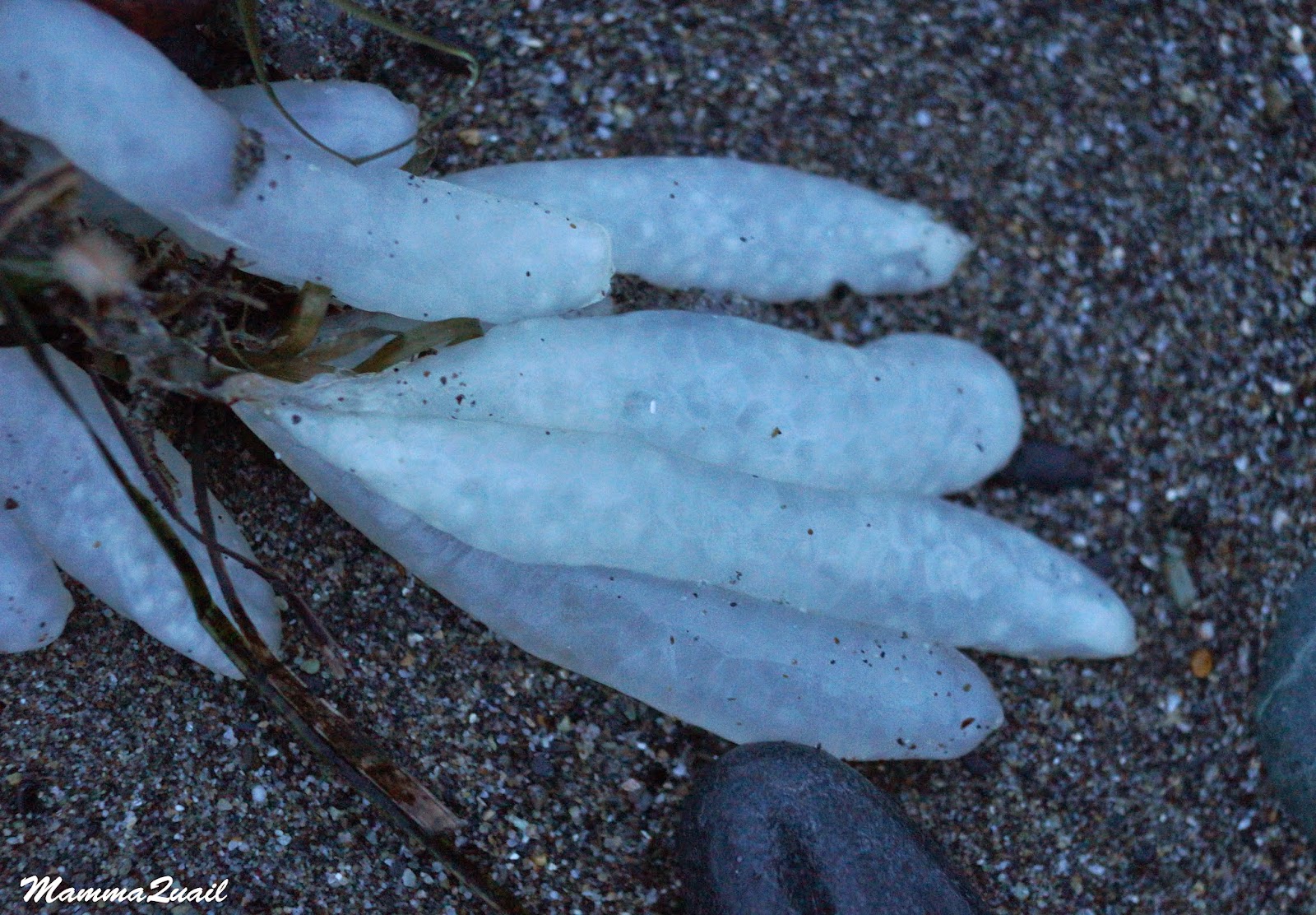Place: Tolowa Dunes State Park, Crescent City, California
Coordinates: 41.869259, -124.211796
Length: we walked 1.3 miles. The trail continues much longer.
Difficulty: easy
We had much to thank for, last Thanksgiving Day. On that day specifically I thanked for a fantastic hike at Lake Earl Wildlife Area that was very rewarding to us.
That hike had taken much longer than we expected and had missed lunch time by a couple of hours. By the time we were done with our belated lunch there wasn't much daylight left. Certainly not enough for a long hike.
There were ominous clouds hanging in the west but the promised rain hasn't started yet. We decided to go once more to Tolowa Dunes and take a walk along the beach.
 |
| Our hike, superimposed on a satellite photo of Tolowa Dunes SP |
We saw evidence of a seafood feast that was held there prior to our arrival. Most crab shells were damaged, but this one remained nice and whole. There is such a thing as a civilized gull, I guess.
After some aimless wandering we decided to take the trail on the dune crest. The trail is like a trench in a sea of grass.
 |
| European Beachgrass (Ammophila arenaria), invasive |
The wind was strong and the grass moved constantly, wave upon wave, towards the horizon.
This grass is an invasive species that took over the beach dunes. I wonder how these dunes looked like before: were there other plants to bind the sand down, or was it free to blow in the wind? Maybe the Tolowa people have the answers.
On superficial glance, it seems that nothing else grows on these dunes. But a closer inspection reveals a few other species, mainly in more exposed areas. Among them are the beach strawberry,
 |
| Beach Strowberry (Fragaria chiloensis) |
 |
| Beach Morning Glory (Calystegia soldanella) |
 |
| A sea of water and a sea of grass in eternal standoff |
 |
| Gulls on the beach |
The shore was strewn with pebbles and seashells, rotting seaweed and pieces of driftwood, and some human junk. My family was ahead but I was walking slowly with my eyes on the ground, searching for something interesting. I found it in the form of a bunch of 2-inch long gelatinous-looking (and feeling) things.
 |
| Washed ashore |
Squid females deposit their eggs, one pod each, anchoring them on seaweed. Apparently a group of squid have lost their offspring when that piece of seaweed detached and washed ashore.
 |
| Squid egg pods |
He went on and I staggered behind, hiding my discomfort in a piece of driftwood that was covered with white spots.
 |
It was an egg pod that was separated from the rest and I took it with me to show the chikas. They got very excited and argued all the way back to the hotel who would have the honor of holding the squishy thing.
At the hotel room I cut it open for them, and tried to get a decent photo. Next trip I think I'll bring along my stereoscope. Or at least, a magnifying lens. It kept them busy enough while the adults were preparing Thanksgiving dinner. There was indeed a lot to thank for that day.
 |
| Squid eggs with embryos |







The squid egg pods are very interesting and the last sea picture is just beautiful.
ReplyDeleteI thank you :-)
Thank you :-)
Deleteהכי הפתיע אותי ידיד החולות... אצלינו אנחנו שמחים לפגוש אותם פה-ושם, בחולות שעוד נותרו - ואצלכם, כפולש, ממש טוב לו.
ReplyDeleteThe Beachgrass is very beautiful indeed. I was sad to find out it is an invasive species here. I wonder what was there before.
Delete